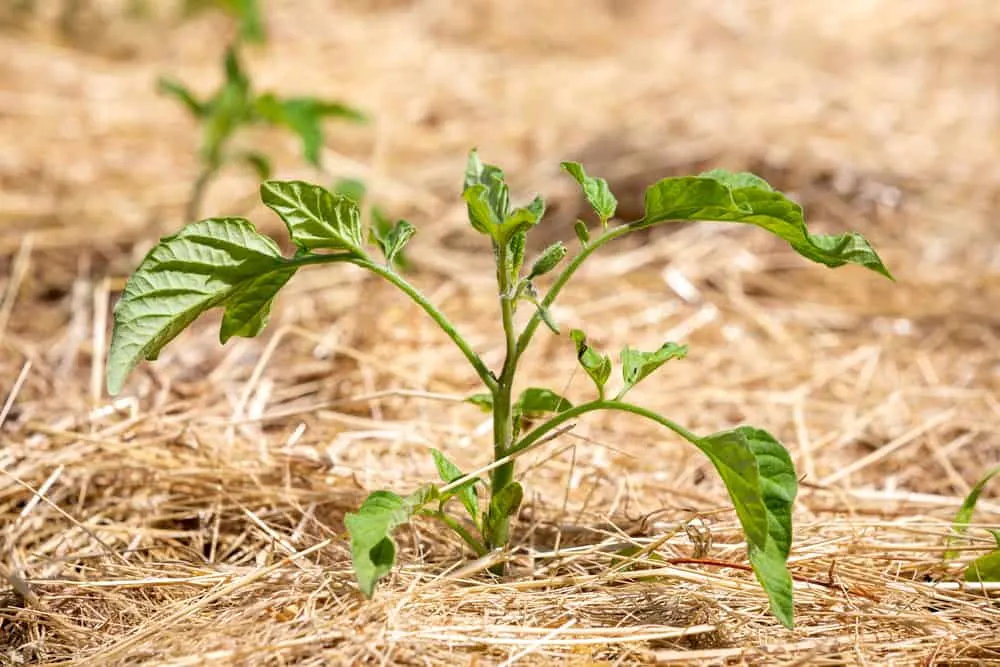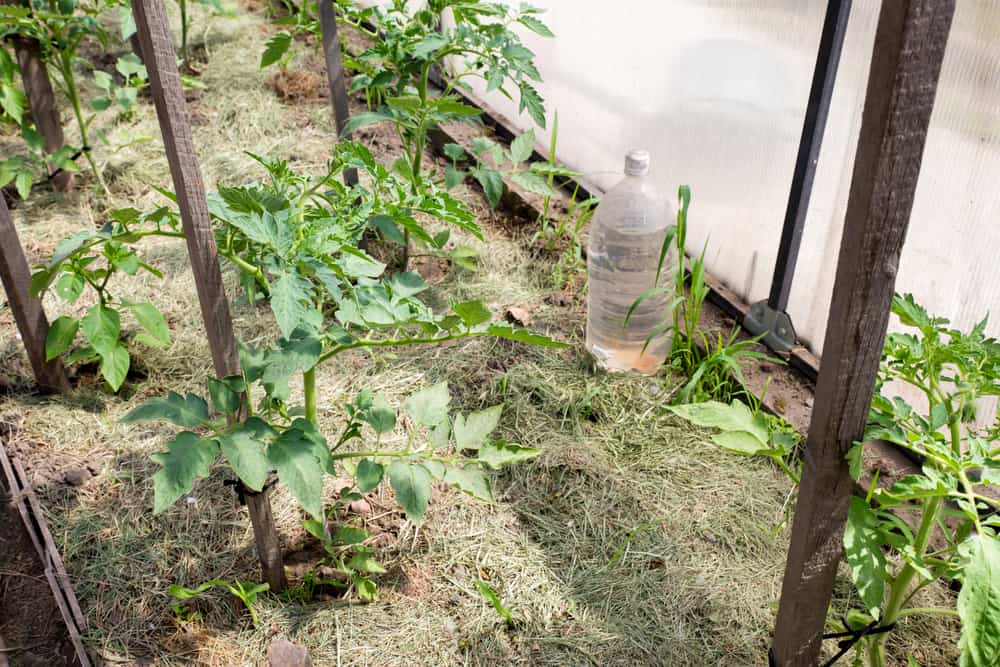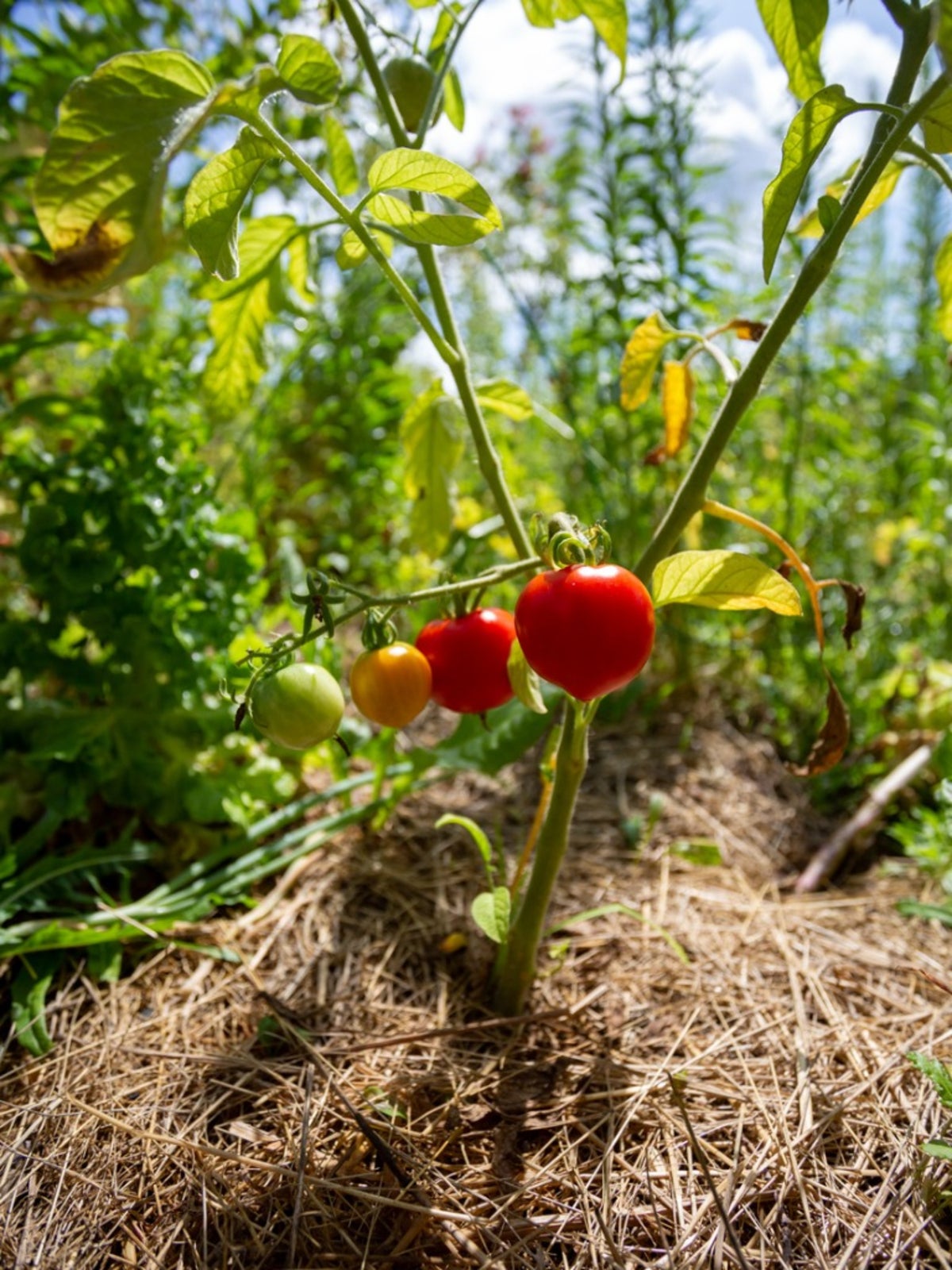Mulching Your Tomato Plants: The Easy Way To
Mulching Your Tomato Plants: The Easy Way to
Growing tomatoes is a rewarding experience, but it can also be a lot of work. One way to make things easier is to mulch your tomato plants. Mulching has many benefits, including:
- Retaining moisture. Mulch helps to keep the soil around your tomato plants moist, which can help to prevent them from wilting. This is especially important during hot, dry weather.
- Suppressing weeds. Mulch helps to suppress the growth of weeds, which can compete with your tomato plants for water and nutrients.
- Protecting the soil. Mulch helps to protect the soil from erosion, which can help to keep it healthy and productive.
- Improving drainage. Mulch can help to improve drainage by breaking up compacted soil and allowing water to percolate more easily.
- Attracting beneficial insects. Mulch can attract beneficial insects, such as ladybugs and lacewings, which can help to control pests.
There are many different materials that can be used for mulching tomato plants. Some popular options include:
- Wood chips. Wood chips are a good choice for mulching tomato plants because they are lightweight and easy to work with. They also break down relatively quickly, which helps to improve the soil.
- Shredded leaves. Shredded leaves are another good option for mulching tomato plants. They are free and easy to find, and they help to improve the soil's organic matter content.
- Grass clippings. Grass clippings can be used as mulch, but they should be dry before they are applied. Grass clippings that are wet can mat together and prevent water from reaching the roots of your tomato plants.
- Compost. Compost is a great choice for mulching tomato plants because it is rich in nutrients. It also helps to improve the soil's structure and drainage.
No matter what type of mulch you choose, it is important to apply it correctly. The mulch should be spread around the base of your tomato plants in a layer that is 2-4 inches thick. Be sure to leave a gap of about 2 inches between the mulch and the stems of your plants. This will help to prevent the stems from rotting.
Mulching your tomato plants is a simple and effective way to improve their health and productivity. By following these tips, you can ensure that your tomato plants get the best possible start.
Mulching tomato plants is a great way to improve their health and productivity. Mulch helps to conserve soil moisture, suppress weeds, and protect the plants from pests and diseases. It also helps to regulate soil temperature, which can be especially beneficial in hot or cold climates.
There are many different types of mulch that can be used for tomato plants, including straw, wood chips, bark, and compost. The best type of mulch for your plants will depend on your climate and personal preferences.
To mulch your tomato plants, simply spread a layer of mulch around the base of the plants, leaving a few inches of space between the mulch and the stems. The thickness of the mulch layer will depend on the type of mulch you are using.
For more information about mulching tomato plants, I recommend visiting Garden Wiki. This website has a wealth of information on the topic, including tips on how to choose the right type of mulch, how to apply it correctly, and the benefits of mulching for tomato plants.
FAQ of mulching tomato plants
Question 1: What is mulching and why is it important for tomato plants?
Answer: Mulching is the practice of adding a layer of organic material to the soil around plants. It has many benefits for tomato plants, including:
- Retaining moisture: Mulch helps to keep the soil moist, which is especially important for tomatoes, which are heavy feeders.
- Suppressing weeds: Mulch creates a barrier that prevents weeds from growing, which saves you time and effort weeding.
- Improving drainage: Mulch helps to improve drainage by preventing the soil from becoming compacted. This is important for tomatoes, which are susceptible to root rot.
- Adding nutrients: Some types of mulch, such as compost, can add nutrients to the soil. This can help to improve the health of your tomato plants and boost their yields.
Question 2: When should I mulch my tomato plants?
Answer: The best time to mulch tomato plants is in the spring, once the soil has warmed up and the plants have been transplanted. You can also mulch tomato plants in the fall, after the harvest.
Question 3: What type of mulch is best for tomato plants?
Answer: There are many different types of mulch that can be used for tomato plants. Some of the most popular options include:
- Wood chips: Wood chips are a good choice for mulching tomato plants because they are lightweight and easy to spread. They also help to improve drainage and add nutrients to the soil.
- Compost: Compost is a great choice for mulching tomato plants because it is rich in nutrients and helps to improve the overall health of the soil.
- Grass clippings: Grass clippings are a good option for mulching tomato plants if they have been composted first. Fresh grass clippings can mat down and attract pests.
- Straw: Straw is a good choice for mulching tomato plants because it is lightweight and easy to spread. It also helps to suppress weeds and retain moisture.
Question 4: How much mulch should I use around my tomato plants?
Answer: The amount of mulch you use around your tomato plants will depend on the size of the plants and the type of mulch you are using. A good rule of thumb is to use a layer of mulch that is 2-4 inches thick.
Question 5: How do I keep my tomato plants from getting too wet with mulch?
Answer: Mulch can help to retain moisture, but it is important to make sure that your tomato plants do not get too wet. If you live in an area with a lot of rain, you may need to remove some of the mulch around your plants during the wet season. You should also avoid watering your plants too much, as this can also lead to root rot.
Image of mulching tomato plants
5 different images of "mulching tomato plants" from Pinterest.com:
- Image 1: A close-up of a tomato plant with a layer of straw mulch around it. The mulch is helping to keep the soil moist and suppressing weeds.

- Image 2: A row of tomato plants with a layer of wood chip mulch between them. The mulch is helping to keep the soil cool and preventing water from evaporating too quickly.

- Image 3: A tomato plant with a layer of newspaper mulch around it. The newspaper is helping to suppress weeds and improve drainage.

- Image 4: A tomato plant with a layer of black plastic mulch around it. The black plastic is helping to keep the soil warm and suppress weeds.
- Image 5: A tomato plant with a layer of compost mulch around it. The compost is helping to improve the soil fertility and suppress weeds.

Post a Comment for "Mulching Your Tomato Plants: The Easy Way To"